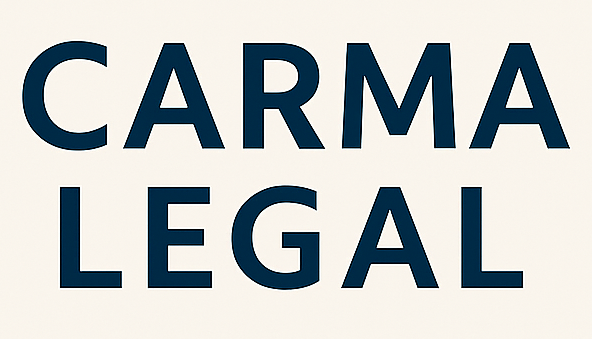If you’ve been injured on the job or harmed by a defective product, knowing when to contact a workplace accident attorney can make a significant difference in protecting your rights and securing the compensation you deserve. A skilled legal advocate can help you navigate third-party liability claims for unsafe worksites, defective machinery, or negligent contractors—situations that often fall outside standard workers’ compensation coverage. By involving a lawyer early, you ensure crucial evidence is preserved, deadlines are met, and responsible parties are held accountable.
Below, you’ll find guidance on assessing your situation, understanding third-party liability, meeting important deadlines, gathering documentation, selecting the right legal partner, and what to expect once you reach out for help. Following these steps will position you to make informed decisions and maximize your recovery.
Assess your accident situation
After an injury at work or due to a defective product, your first priority is your health and safety. Taking immediate steps not only protects you physically but also strengthens any future legal claim.
- Seek medical attention
- Even if your injury seems minor, see a doctor as soon as possible.
- Documentation of your treatment creates a medical record linking care to the accident.
- Report the incident
- Notify your supervisor or employer in writing right away.
- Follow company policy for injury reporting to avoid disputes about notice.
- Document the scene
- Take photos of the location, equipment involved, and any visible injuries.
- Collect contact information for witnesses who saw the accident.
- Preserve evidence
- Keep defective tools or machinery in the same condition, if safe to do so.
- Hold onto your hard hat, safety gear, or work clothes until your attorney advises otherwise.
As a result of taking these actions promptly, you’ll have a clearer record of events and medical treatment, which is essential if you pursue a claim beyond workers’ compensation.
Identify third-party liability
When an injury involves negligence by someone other than your employer, you may have a third-party liability case. Common scenarios include defective equipment, unsafe premises owned by another party, or negligent subcontractors.
-
Defective machinery or tools
• Product defects, design errors, or inadequate warnings can form the basis of a product liability claim [1].
• If you suspect a faulty component caused your injury, consult a product liability lawyer or injury from defective equipment lawyer. -
Unsafe worksite conditions
• Hazardous environments—such as unguarded machinery or lack of proper signage—can expose employers, contractors, or property owners to liability.
• A unsafe worksite injury lawyer helps you identify responsible parties, including third-party contractors. -
Third-party contractors
• Injuries caused by subcontractors, delivery drivers, or maintenance crews may fall outside your employer’s workers’ compensation coverage.
• A workplace injury lawyer third party claim can guide you through filing a separate lawsuit. -
Manufacturer or supplier negligence
• Machinery manufacturers have a duty to design and maintain safe products.
• If design flaws played a role, consider talking to a manufacturing defect attorney.
Identifying the correct negligent party ensures you pursue the right claim, whether it’s a third-party personal injury lawsuit, a product liability action, or a combination of both.
Note crucial deadlines
Legal claims hinge on timely action. Missing filing deadlines can bar your right to compensation, even if you have a strong case.
-
Statute of limitations
• Personal injury and product liability suits typically have deadlines ranging from two to six years, depending on your state.
• If you wait too long, courts may dismiss your case without reviewing its merits. -
Workers’ compensation notice requirements
• Many jurisdictions require you to report workplace injuries within days or weeks of the accident.
• Failure to notify your employer promptly can jeopardize your benefits. -
Claim‐filing windows
• Some states set specific time frames for filing a workers’ comp claim—often between six months and one year after the injury date.
• Third-party lawsuits often follow a different timeline than compensation claims. -
Equitable tolling and exceptions
• In rare cases, courts extend deadlines if you were unaware of your injury’s severity or the at-fault party’s identity.
• These exceptions vary greatly by jurisdiction.
Because deadlines differ based on the type of claim and local laws, it’s important to consult a legal professional early. They’ll verify your state’s timelines and ensure all paperwork is filed on schedule.
Gather essential documentation
Building a strong case requires detailed records and evidence from the outset. The more comprehensive your documentation, the better your attorney can demonstrate liability and damages.
• Medical records and bills
- Hospital and doctor reports
- Physical therapy invoices
- Prescription and rehabilitation costs
• Accident reports
- Employer or site incident reports
- OSHA or safety inspection records, if available [2].
• Photographic and video evidence
- Images of the scene and equipment involved
- Visual proof of hazards such as missing guards or slick floors
• Witness statements
- Written accounts from co-workers, visitors, or bystanders
- Contact details for follow-up interviews
• Employment and training records
- Job description and safety training documentation
- Maintenance logs for tools and machinery
• Correspondence and communications
- Emails or memos discussing known hazards
- Text messages or safety alerts issued before the incident
By assembling these materials in an organized file—whether digital or physical—you help your legal team evaluate damages accurately and negotiate effectively with insurers or opposing counsel.
Choose an experienced attorney
Selecting the right legal partner is crucial. Not all personal injury lawyers handle third-party workplace claims or product liability cases with equal skill.
Consider these criteria:
- Specialization in workplace and product injuries
- Track record of successful third-party liability cases
- Years of experience and industry recognition [3]
- Commitment to ongoing legal education in employment and safety law
- Client testimonials and professional accolades
- Contingency fee arrangements—no fee unless you recover
An attorney well-versed in holding negligent companies accountable will know how to work with accident reconstruction experts, safety specialists, and medical professionals to build a robust claim [4]. Before making a decision, meet with potential lawyers to discuss their approach, ask about past settlements, and review their fee structure.
For specific needs, you might explore:
- Construction accident lawyer if you were injured on a construction site
- Scaffold accident attorney or crane accident lawyer for specialized hazards
- Dangerous product lawsuit attorney if a faulty product caused your injury
Contact your lawyer promptly
Once you’ve chosen an attorney, reach out without delay. Early engagement allows your legal team to:
- Preserve perishable evidence such as defective parts or site conditions
- Interview witnesses while memories are fresh
- Monitor and control communication with opposing parties and insurers
- Guide you through medical treatments and compensation paperwork
You should especially consider contacting a lawyer immediately if:
- Your workers’ compensation claim is denied or underpaid
- You suspect a third party shares responsibility
- You face mounting medical bills or lost wages
- You’re uncertain about your legal options beyond workers’ comp
Many workplace accident attorneys offer a free initial consultation. By having an expert review your case early, you’ll know where you stand and how to proceed with confidence.
Expect the legal process
Understanding the typical stages of a workplace injury lawsuit helps set realistic expectations and reduces uncertainty.
- Case evaluation
• Your attorney reviews evidence, medical records, and liability issues. - Investigation
• Experts reconstruct the accident, inspect equipment, and analyze safety protocols. - Claim filing
• Formal complaints are filed in civil court, and defendants are served. - Discovery
• Both sides exchange documents, depose witnesses, and gather expert testimony. - Settlement negotiations
• Most cases resolve before trial through mediation or direct negotiation. - Trial (if necessary)
• A jury or judge hears evidence and determines liability and damages. - Compensation distribution
• You receive payment for economic losses (medical bills, lost wages) and non-economic damages (pain and suffering).
Throughout each phase, your lawyer advocates for your interests, ensures procedural compliance, and negotiates fair terms. While timelines vary, staying informed and responsive accelerates progress and helps you focus on recovery.
Take the next step
If your workplace injury involves negligence beyond standard workers’ compensation, don’t wait until evidence fades or deadlines pass. By contacting a workplace accident attorney early, you safeguard your claim, hold negligent parties accountable, and increase your chances of securing full compensation for medical costs, lost income, and long-term care.
Reach out today for a free consultation and learn how a dedicated legal team can guide you through the complexities of third-party liability and product defect claims. Your recovery and financial security deserve nothing less than expert advocacy.








